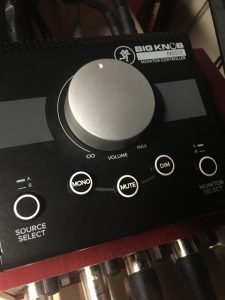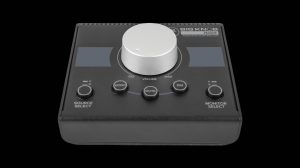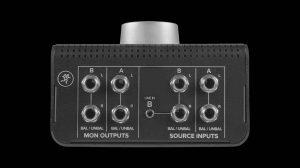My first gear review! Cross your fingers, let’s see how this goes…

If you’ve been thinking about getting this monitor controller for any number of reasons, I’d say do it! You might find yourself wondering how you got along without this device before. Besides switching between inputs and speakers it has some very useful functions.
At times in my small studio I leave the door open from the iso booth to communicate to the artist faster. The mute button is the quick way to make sure I didn’t leave the monitor volume up during recording eliminating any feedback to the active mic. We use headphones while tracking, then listen back through the monitors after numerous takes. Not many people listen back in Mono when mixing down, but it can be VERY useful for phase issues and making sure levels are in balance. This is a lost feature on many current recording interfaces and I’m really glad to see it available here. I’ll be honest, I do not currently use the Dim button but maybe in the future a use will surface. It does exactly what is says, lowering the signal -20db when activated. But also returns to the previous volume immediately when released. I’d rather just turn the knob, which I can access much easier now that it’s not confined to just the front of my interface.

Before I only had one set of 6.5″ near fields available for play back but they’re positioned for mixing while sitting down. Since I like to stand while working, my small satellite-style PA setup helped to expand the listening area as far field monitors. Now having the Big Knob connecting between the two is super easy. Not only can I now switch between my near and far field speakers, but also the inputs from my recording interface or the output of my DJ mixer for practicing on my turntables.

You’ll notice first thing there is some weight to it which is Mackie all the way. Solid and heavy in true “Built-Like-A-Tank” construction. Signals pass through with complete transparency and no coloration just like their mixers. The volume knob is just loose enough but stops or “sticks” where you leave it and is SUPER SMOOTH.
Like I said, if you’re on the fence make the jump! For a passive switch I’m not sure it can get any better than this when you compare feature for feature.
A big thank you goes to my friend Shawn who is always supportive in my pursuit of music 😀
Geek out on the Mackie website and owners manual links below
Mackie Big Knob
Passive Big Knob Owners Manual




